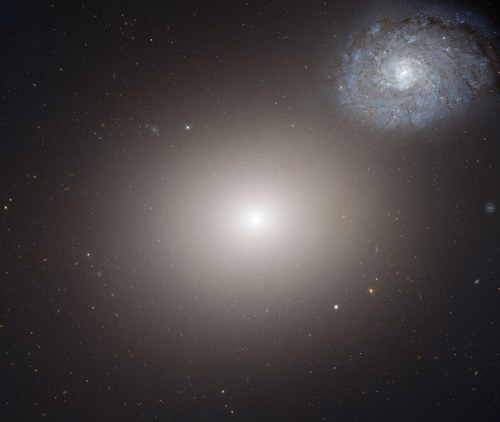
This NASA/ESA Hubble Space Telescope image shows the peculiar galaxy pair called Arp 116. Credit: NASA, ESA (https://www.spacetelescope.org/images/heic1213a/)
We study galaxies and their evolution with observations and theoretical models and by covering a wide range of topics, from the kinematics of local galaxies to the formation of the first massive systems in the early Universe.
We use numerical simulations and analytical methods (stellar dynamics, potential theory) to study the dynamics of galaxies, from the stellar and gas kinematics, to scaling relations of elliptical galaxies, collisions between galaxies, properties of dark matter halos and modified Newtonian dynamics. We study the circulation of baryonic matter and its fluid dynamics, the accretion and outflows due to stellar feedback and from active galactic nuclei.
We cover the entire wavelength range, from X-ray observations of hot gas to the study of cold gas in radio waves. We use state-of-the-art observing facilities such as JWST, Euclid, VLT and ALMA to measure the properties of galaxies in the local Universe up to the epoch of reionization. By observing gas, dust and stars in high-redshift galaxies, we study crucial physical processes such as the accumulation of stellar mass, the quenching of star formation, the coevolution of galaxies and active galactic nuclei, and the physical connection between the interstellar medium and star formation.